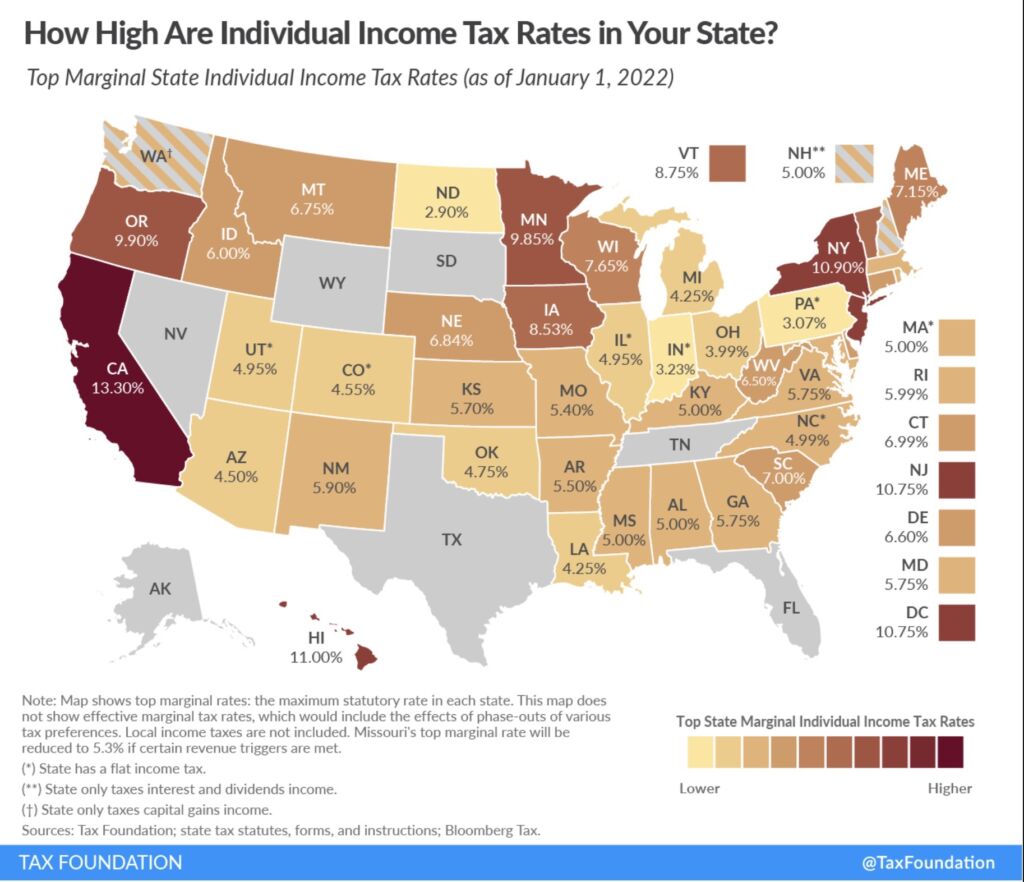Iowa just cut taxes yet again, will Minnesota legislators follow suit?
Up until January 2021, Iowa’s corporate tax rate was significantly higher than that of Minnesota –– 12 percent compared to 9.8 percent. However, in 2018, Iowa passed a law that significantly reduced its corporate tax rate, bringing it down to 9.8 percent — the same rate as Minnesota. In the same year, Iowa also passed a bill that would cut its top individual income tax rate — which was already lower than that of Minnesota — from 8.53 percent to 6.5 percent beginning in 2023.
It turns out, this was just the beginning of Iowa’s tax reform. Iowa’s governor signed a new law that will gradually lower the top income rate until Iowa has a flat income tax rate of 3.9 percent starting in 2026.
According to the De Moines Register,
Gov. Kim Reynolds signed a major realignment of Iowa’s tax system into law Tuesday, achieving one of her top legislative priorities in time for a national speech introducing herself to a conservative audience.
Over the next few years, the law will lower Iowa’s top income tax rate until all Iowans pay a 3.9% flat tax starting in 2026. Along the way, the measure will eliminate the state’s progressive income tax system, in which wealthier Iowans pay higher rates than lower-income Iowans, and place Iowa among 10 other states with some form of flat income tax.
It’s the third major tax cut Reynolds, a Republican, has signed into law as governor, following previous reductions in 2018 and 2021.
“Even after significant tax cuts and historic investments last year we were still over-collecting on Iowans,” she said. “There’s never been a better time in Iowa for bold, sustainable tax reform. And that’s exactly what today’s bill represents.”
Relatively speaking, while taxes for Iowa and Minnesota were comparable before this reform, low-earning Minnesotans paid higher effective rates compared to low-earning Iowans. Using 2021 income tax brackets, for example, effective income tax rates for individual tax filers making $30,000 and $50,000 were higher in Minnesota than in Iowa. Although for higher incomes, the tax rates were similar.
A 3.9 percent flat income tax rate means that both high and low-income Iowans will face significantly lower tax burdens compared to Minnesotans.
| Effective tax rates for a single filer by the level of income | ||||
| $30,000 | $50,000 | $100,000 | $200,000 | |
| Minnesota | 5.48% | 6.01% | 6.52% | 7.52% |
| Iowa | 4.26% | 5.07% | 6.52% | 7.52% |
Furthermore, assuming no changes with other states, Iowa’s adoption of a flat tax rate of 3.9 percent means that the next highest top income rate after Minnesota will be Wisconsin’s 7.65 percent. Wisconsin’s top rate is, however, nearly 30 percent lower than Minnesota’s top rate. This means that without tax reform, Minnesota will be its own island of high taxes.

In order for Minnesota to compete, legislators should cut taxes
As American Experiment noted in its 2020 Economy report, Minnesota lags other states in important economic measures like GDP growth, business formation, and job creation. One of the two main reasons for this is our punitive tax system.
Minnesota needs to compete not only with other states, but other countries for labor and capital. Our high taxes make it difficult for our state to attract investment and high-skilled labor into the economy.
And given that numerous other states besides Iowa have undertaken measures to cut taxes during the pandemic, Minnesota’s tax system will be emerging out of the pandemic even more burdensome than before. That is when compared to most states.
Legislators should take the historic budget surplus as an opportunity to reduce taxes so that Minnesota can catch up with other states. Otherwise, this trend with our economy’s lackluster performance will potentially only get worse.